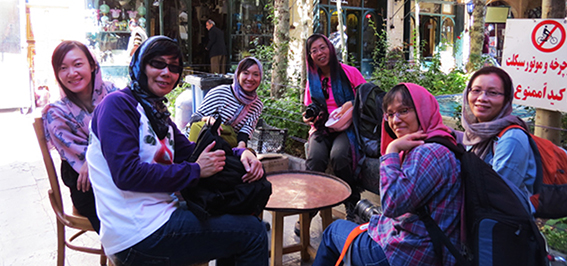Tourism balance has become positive in summer, for the first time since the 1979 Islamic Revolution, head of Iran’s Cultural Heritage, Handicrafts and Tourism Organization (ICHHTO) announced last week. Masoud Soltanifar said during the period, 1.41 million people travelled out, and 1.49 million arrived in, marking 80,000 more incoming travelers.
However, as the statistics are published by the country’s immigration police they include virtually every one crossing the borders, even the ones not holding tourist visas- and thus accounted as tourists,” the ICHHTO’s public relations office told Donyay-e Eghtesad.
Soltanifar, has recently been making much reference to a 200% increase in the number of foreign tourists over the past year, a growth which clearly visible across the country.
This increase has been the result of several factors: from President Rouhani taking office and the consequent thawing of political relations with the West, to the relative safety of Iran compared to its neighboring countries.
Positive Trend
Mohamad-reza Pouyandeh, director general of ICHHTO’s department for tourism planning says the positive development continued into October.
The tourism balance which was negative to the extent of 600,000 people traveling abroad in summer of 2012, was reduced to a 70,000 deficit a year later, and led to a surplus of 80,000 incoming travelers this summer (2014).
In the previous year, for 4.5 million people who entered the country, 7 million traveled out, spelling a negative balance of 2.5 million.
A table presented bellow shows tourism trade-offs from the past to present, raising the question whether the positive trend will continue all through the year.
Optimistic but Conditional
The CEO of one the great tourism holdings in Iran, Dr Hassan Taghizadeh Ansari, expresses optimism about continuation of this trend on condition that three criteria will endure: the prevailing favorable atmosphere for Iran as the central factor; second, the big difference in the rial-dollar exchange rate which renders the country a cheap destination for travel packages, and third, the unrest in neighboring countries directing their share of international tourists to Iran.
This private sector activist says they operated 90% more incoming tours this summer compared to the same period last year. This is while their 2013 summer tours were up by a 40% compared to the ones in summer of 2012.
On the other hand, “With devaluation of the rial against dollar in the Persian calendar year 1391– March 21, 2012- outgoing tours experienced an average 50% decrease, followed by a mild 10% rise since 1392 of the Iranian calendar (started March 21, 2013),” Ansari adds.
He further explains, “The published official statistics needs detailed analysis as regards the number of actual tourists, number of night-stays and the tourists’ expenditures,” noting that tourists from Europe and more developed countries earn more income for the country.
However, “the yield from tourists is not always a direct one” he points out, mentioning the recent train tours as an example where they had little profit but helped the country’s image as a safe country.
Definitely, tourism has faced a revolution in the recent couple of years. Continuation of a logical trend in tourism growth may need more detailed study of the tourists and their economic impacts.


